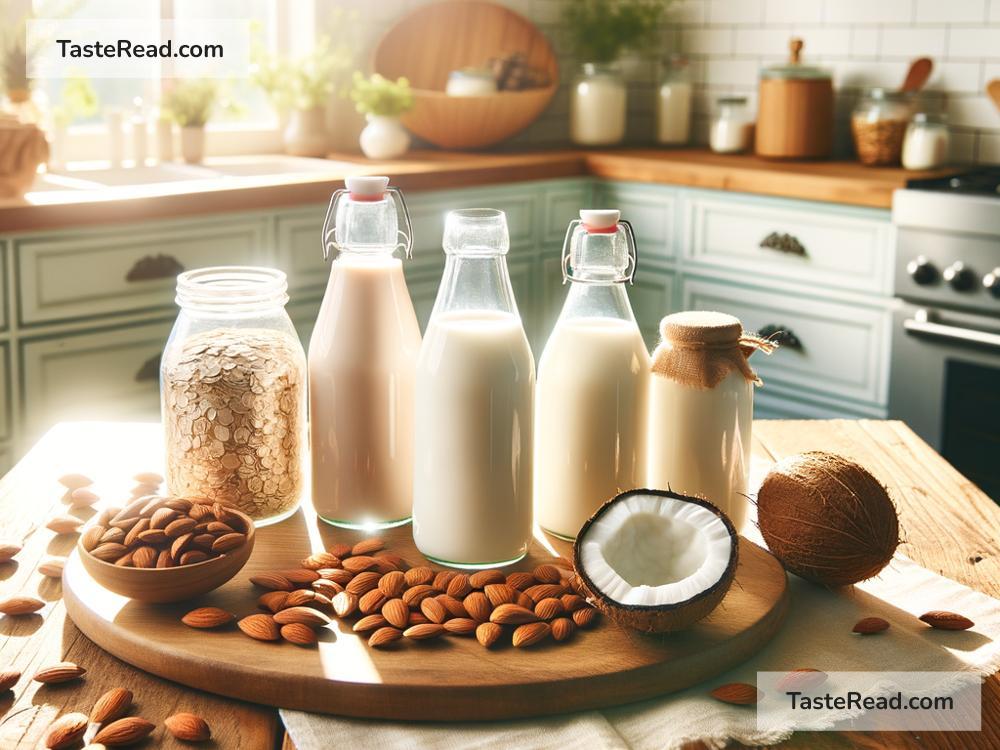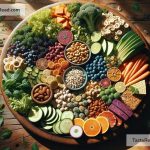Cooking with Low-Carbon Impact Plant-Based Milks
As the world becomes more environmentally conscious, many of us are looking for ways to reduce our carbon footprint. Did you know that one simple change in your kitchen can make a big difference? Switching from dairy milk to plant-based milks isn’t just good for your health; it’s also a great step towards a more sustainable planet. Let’s dive into the world of cooking with low-carbon impact plant-based milks.
Why Plant-Based Milks?
Cow’s milk production is resource-intensive, requiring large amounts of water, feed, and land, not to mention the methane emissions from cows. Plant-based milks, on the other hand, generally have a lower environmental impact. They use less water, less land, and produce fewer greenhouse gases. From almond and oat to soy and coconut, the variety of plant-based milks available means there’s a sustainable option for almost every recipe and palate.
The Climate-Friendly Kitchen Staple
Oat milk is often praised for its low environmental impact. It requires significantly less water than almond milk and doesn’t produce as much CO2 as dairy milk. It’s creamy and mild, making it versatile for cooking and baking. Whether you’re whipping up a batch of pancakes or a smooth, creamy sauce, oat milk can be a climate-friendly substitute for dairy milk.
Soy milk is another excellent choice. It’s one of the most nutritionally balanced plant-based options, making it great for your health and the planet. Soybeans are efficient to grow, requiring less water and land, and they even enrich the soil. In your kitchen, soy milk can be used one-for-one in most recipes that call for dairy milk, making it an easy swap.
Almond milk, while it requires more water to produce than oat or soy milk, still has a significantly lower carbon footprint than cow’s milk. Its nutty flavor adds a subtle twist to dishes and works wonderfully in desserts and sweet treats. Just be mindful of water usage and choose brands that prioritize sustainable practices.
Coconut milk is a savior for those creamy, rich dishes. While coconuts don’t need as much water or fertilizer as some other crops, it’s important to consider the distance they might travel to reach your kitchen. Using coconut milk in cooking delivers a tremendous flavor and can make a dish feel indulgent without weighing heavily on the planet.
Cooking Tips and Tricks
-
Substituting Plant-Based Milks: When substituting plant-based milks in recipes, consider each milk’s unique characteristics. For instance, almond milk might add a nutty flavor, whereas oat milk provides a creamier texture. It’s usually a one-for-one substitution, but you might need to adjust according to taste and consistency.
-
Heating Plant-Based Milks: Be gentle when heating plant-based milks, as they can separate or curdle under high heat. When cooking sauces or soups, add the milk towards the end and heat slowly.
-
Sweetness Levels: Some plant-based milks come sweetened, which can affect the flavor of your dishes. Look for unsweetened varieties for more control over your recipe’s taste.
-
Thickening: If you need to thicken a plant-based milk for a particular recipe, consider adding a little flour or cornstarch dissolved in water, just as you might with dairy milk.
Saving the Planet, One Recipe at a Time
Cooking with plant-based milks can be a delicious adventure that also aligns with a low-carbon lifestyle. As you experiment, you’ll not only discover new flavors and textures but also contribute to a more sustainable world. Every plant-based meal is a step towards reducing our environmental impact, and it starts with simple choices in our kitchens.
Whether you’re a seasoned chef or a cooking newbie, incorporating plant-based milks into your repertoire is an impactful, healthful, and tasty way to support our planet. Let’s embrace these sustainable alternatives and make every meal an opportunity to protect the earth for future generations. Happy cooking!


